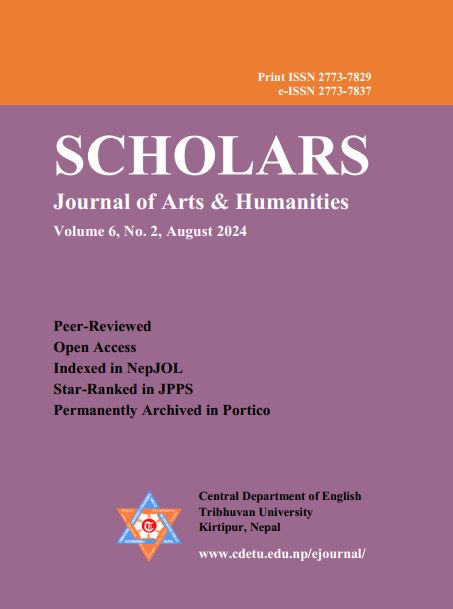The Interplay of Fantasy and Physics in King’s The Dark Tower: The Gunslinger: A Physicist’s Perspective
DOI:
https://doi.org/10.3126/sjah.v6i2.68744Keywords:
Fictional realm, gunslinger, multiverse theory, parallel universesAbstract
The paper aims to explore the existence of many worlds and their interconnections in Stephen King’s The Dark Tower: The Gunslinger. It draws on theoretical physicist Brian Greene’s concept of parallel universes. It also draws on the theoretical concept of Albert Einstein and Nathan Rosen as they have discussed in ‘Einstein-Rosen Bridge Theory’. This theory is commonly known as wormholes that connect different regions of space-time, enabling the journey from one world to another and back. Greene's theoretical underpinnings, proposing a vast ensemble of universes with distinct properties, find expressions in the narrative. King's narrative, exemplified by, among others, Jake's revival in Mid-World after a presumed death in a New York car accident, explicitly embraces the idea of parallel universes, each with unique physical laws that influence the concepts such as life and death. The narrative unfolds across disparate worlds, echoing Greene’s theoretical mapping of parallel universes, each governed by its unique set of physical laws and realities. In the narrative, the exploration of multiverse concepts employs fiction's imaginative license to investigate interconnected universes and the potential for transcendent journeys through the cosmic fabric. The theoretical backdrop finds resonance in the novel where characters navigate within the four-dimensional continuum, mirroring the speculative nature of multiverse theories. By intertwining the world of fantasy with the hypotheses of physics, the paper discusses the connections between seemingly disparate realms. This perspective bridges literature and theoretical physics, offering a compelling exploration of the speculative landscapes of parallel universes.
Downloads
Downloads
Published
How to Cite
Issue
Section
License

This work is licensed under a Creative Commons Attribution 4.0 International License.
© Central Department of English, Tribhuvan University and Authors




